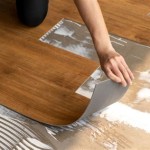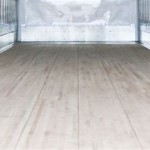Cypress Pine Flooring: A Comprehensive Overview
Cypress pine flooring represents a popular and aesthetically pleasing option for residential and commercial properties. Its unique characteristics, ranging from its natural durability and distinctive grain patterns to its environmental sustainability, contribute to its widespread appeal. This article aims to provide a comprehensive overview of cypress pine flooring, covering its properties, advantages, installation considerations, and maintenance requirements.
Cypress pine, native to Australia, specifically the Eastern states, encompasses several species within the *Callitris* genus. The most common species used for flooring is *Callitris glaucophylla*, commonly known as White Cypress or Murray Pine. It's important to distinguish this Cypress pine from other Cypress varieties found globally, as their properties and suitability for flooring may differ significantly. The Australian Cypress pine used for flooring possesses specific traits that make it a desirable material for domestic and commercial applications.
The heartwood of Cypress pine is naturally resistant to termites and decay. This inherent durability eliminates the need for extensive chemical treatments, making it a healthier and more environmentally responsible choice compared to some other timber flooring options. This resistance arises from the presence of natural oils and compounds within the heartwood structure. These compounds act as a natural preservative, protecting the wood from insect infestation and fungal decay. This natural resistance significantly extends the lifespan of the flooring and reduces the need for costly repairs or replacements.
Key Characteristics of Cypress Pine Flooring
Several key characteristics distinguish Cypress pine flooring from other timber options. These properties contribute to its unique appeal and functionality.
Firstly, the visual appearance of Cypress pine is highly regarded. The wood features a creamy white to light yellow sapwood with a distinctive, knotty heartwood. The heartwood exhibits a range of colors, from light honey to reddish-brown, creating a warm and inviting aesthetic. The presence of numerous knots, particularly in lower grades, adds to the character and rustic charm of the flooring. The grain pattern is generally straight, although variations can occur depending on the specific tree and the cutting method used. These variations contribute to the natural beauty and individuality of each board.
Secondly, Cypress pine possesses good dimensional stability. This means that it is less prone to warping or cupping compared to some other timber species, particularly when subjected to changes in humidity. While proper acclimatization is still essential before installation, the inherent stability of Cypress pine contributes to the longevity and performance of the flooring. The cellular structure of the wood allows it to expand and contract less readily than some other species, minimizing the risk of gaps forming between boards or the flooring becoming uneven.
Thirdly, Cypress pine is a relatively soft timber compared to hardwoods like Jarrah or Blackbutt. This softness can make it more susceptible to dents and scratches. However, this can be mitigated by choosing a higher grade of Cypress pine (with fewer knots, which tend to be softer) and applying a durable finish. The softness also contributes to its workability, making it easier to cut, shape, and nail during installation. The choice of finish is crucial in determining the overall durability of the flooring and its resistance to wear and tear. Regular maintenance, such as sweeping and mopping, can also help to prolong the life of the finish and prevent damage to the underlying wood.
Advantages of Choosing Cypress Pine Flooring
The selection of Cypress pine flooring offers a range of advantages that contribute to its popularity.
One of the primary benefits is its natural termite resistance. As previously mentioned, the heartwood contains natural oils that deter termites and other wood-boring insects. This inherent resistance reduces the need for chemical treatments, promoting a healthier living environment, particularly for individuals sensitive to chemicals. The absence of chemical treatments also reduces the environmental impact of the flooring, making it a more sustainable choice.
Another significant advantage is the unique aesthetic appeal of Cypress pine. The knotty grain and warm color variations create a rustic and inviting atmosphere. This makes it a suitable choice for various architectural styles, from traditional to contemporary. The visual character of the flooring adds warmth and personality to a space, making it feel more comfortable and welcoming. The natural variations in color and grain pattern ensure that each floor is unique, adding to its overall appeal.
Furthermore, Cypress pine is a relatively sustainable timber resource. It grows relatively quickly and is often sourced from sustainably managed forests. Choosing Cypress pine flooring can support responsible forestry practices and reduce the environmental impact of construction. Sustainable harvesting practices ensure that the forest ecosystem is maintained and that future generations can benefit from this valuable resource. Certification schemes, such as those offered by the Forest Stewardship Council (FSC), can provide assurance that the timber has been sourced from responsibly managed forests.
Installation and Maintenance Considerations
Proper installation and ongoing maintenance are crucial for ensuring the longevity and performance of Cypress pine flooring.
Prior to installation, it's imperative to acclimatize the flooring to the ambient conditions of the installation site. This involves storing the boards in the room where they will be installed for several days or weeks to allow them to adjust to the temperature and humidity levels. This acclimatization process helps to minimize the risk of warping, cupping, or gapping after installation. The ideal moisture content of the wood should be within a specific range, typically recommended by the flooring manufacturer or supplier.
During installation, it’s crucial to use appropriate fastening methods. Nailing or screwing the boards to the subfloor is a common practice. The type of fastener used should be appropriate for the type of subfloor and the thickness of the flooring boards. It's also important to maintain consistent spacing between the boards to allow for expansion and contraction. Using a moisture meter to check the moisture content of both the flooring and the subfloor is recommended to ensure optimal adhesion and prevent future problems.
Regular maintenance is essential for preserving the appearance and durability of Cypress pine flooring. This includes sweeping or vacuuming regularly to remove dirt and debris, which can scratch the surface. Mopping with a damp cloth and a mild detergent is also recommended. Avoid using abrasive cleaners or excessive amounts of water, as these can damage the finish. Applying a fresh coat of finish every few years can help to protect the wood and maintain its appearance. The frequency of re-coating will depend on the level of traffic and the type of finish used.
When selecting a finish, it's important to choose one that is appropriate for the level of traffic and the desired aesthetic. Polyurethane finishes are durable and resistant to scratches, while oil-based finishes provide a more natural look and feel. Water-based finishes are low in VOCs (volatile organic compounds) and are a more environmentally friendly option. The choice of finish should also take into account the specific properties of Cypress pine, such as its softness and its natural oils. Some finishes may not adhere well to oily woods, so it's important to consult with a flooring professional or finish supplier to ensure that the chosen finish is compatible. Regular waxing or polishing can also help to protect the finish and maintain its luster.
Addressing potential issues promptly is also important. If scratches or dents occur, they can often be repaired with wood filler or touch-up stain. Water damage should be addressed immediately to prevent warping or staining. Regular inspections can help to identify potential problems before they become more serious and costly to repair.
In summary, Cypress pine flooring offers a unique combination of aesthetic appeal, durability, and sustainability. Its natural resistance to termites and decay, its distinctive grain patterns, and its relatively sustainable sourcing make it a popular choice for residential and commercial properties. By understanding its properties, advantages, installation considerations, and maintenance requirements, informed decisions can be made regarding its suitability for specific applications.

Cypress Pine Timber Flooring Abbey

Cypress Pine Flooring Nationwide Timber

Cypress Pine Flooring Solid 98 X 19 Tongue And Groove

Cypress Pine Flooring 85x19 Robot Building Supplies

Cypress Pine Timber Flooring Abbey

Cypress Pine Premium Timber Flooring End Matched Kd 75mm Cover X 20mm Thick

Cypress Pine Know How Flooring

Cypress Pine Floor Restoration City Beach Timber Flooring

Cypress Pine Floor Sanding And Polishing Lb Floors Toowoomba

Cypress Pine Decking Nationwide Timber
Related Posts








